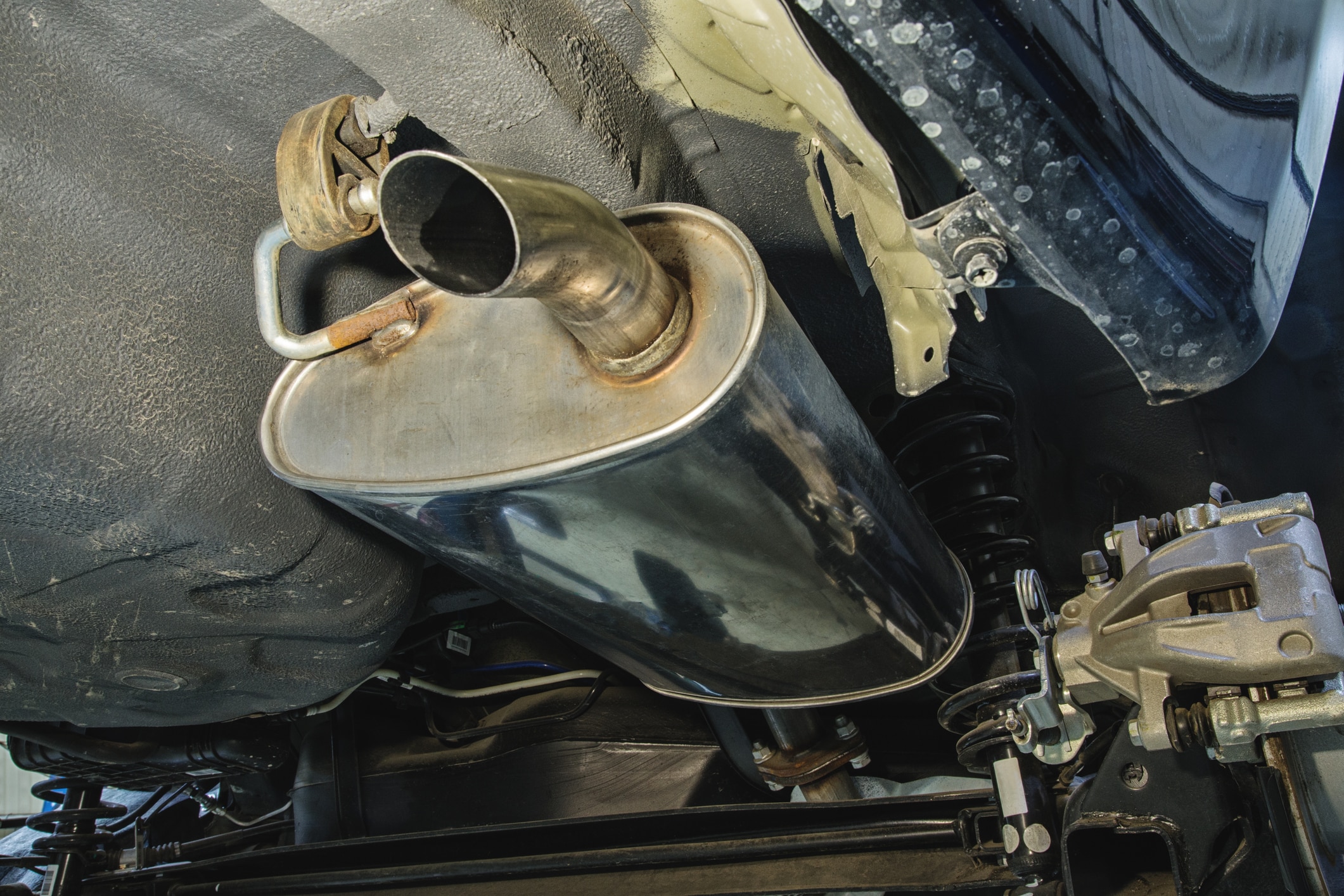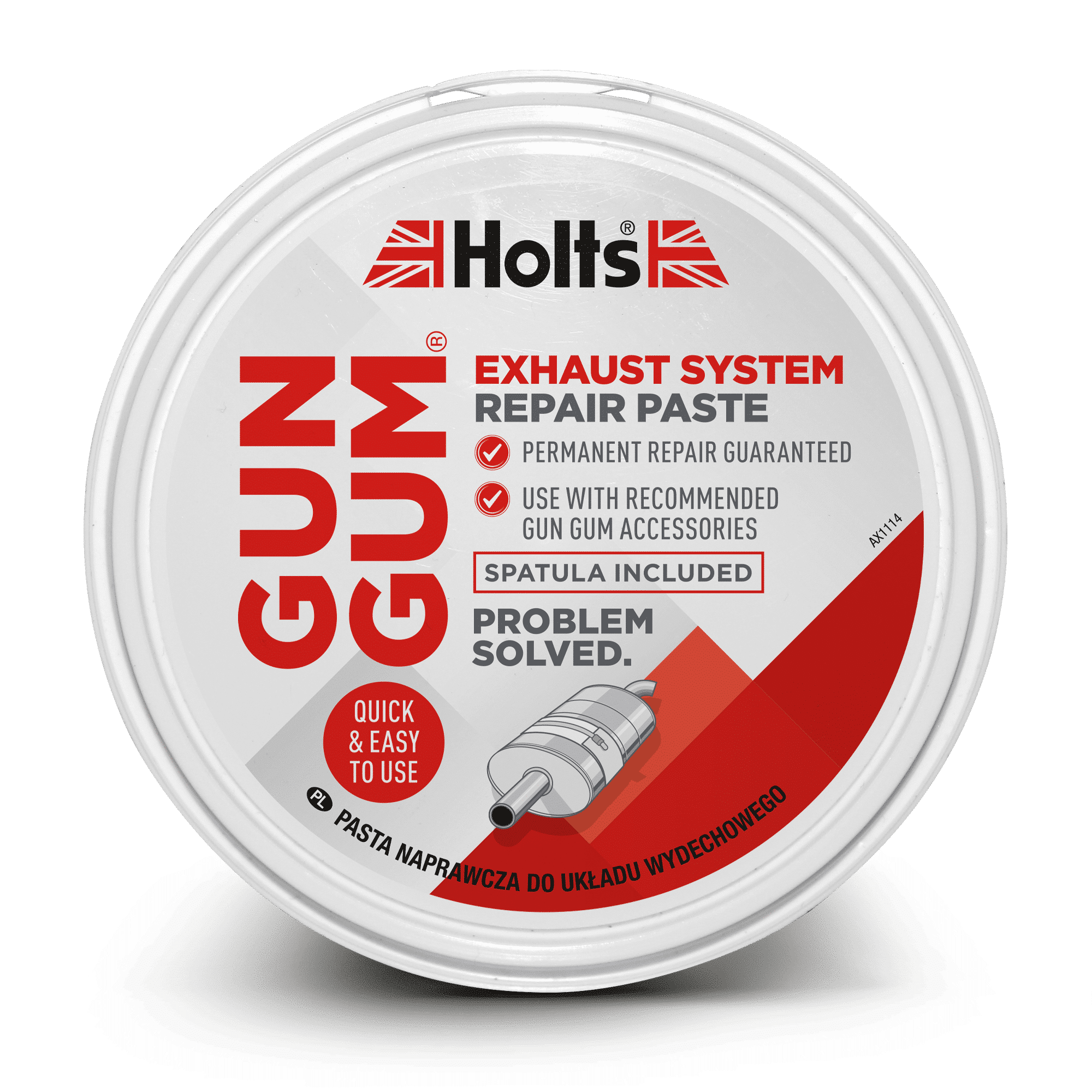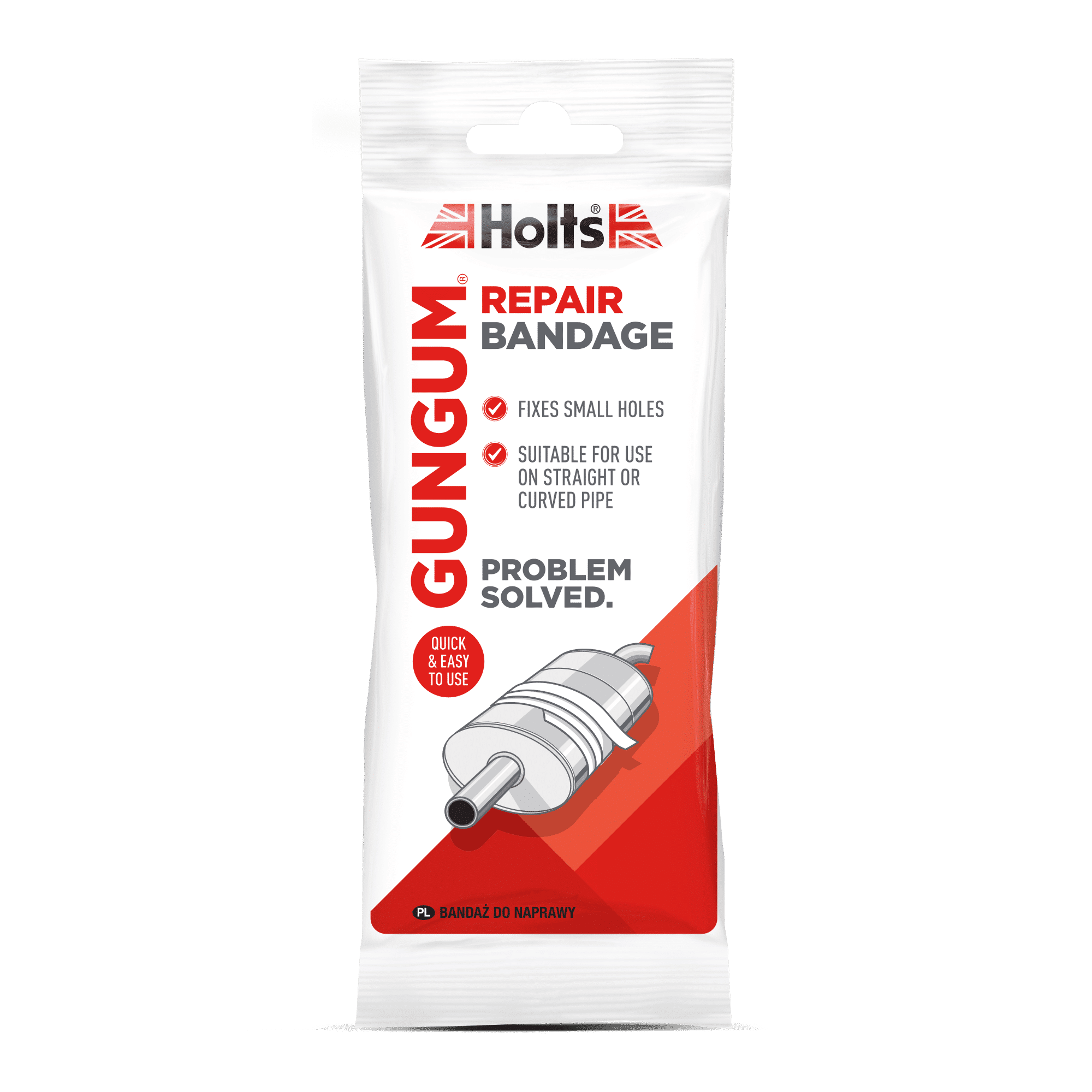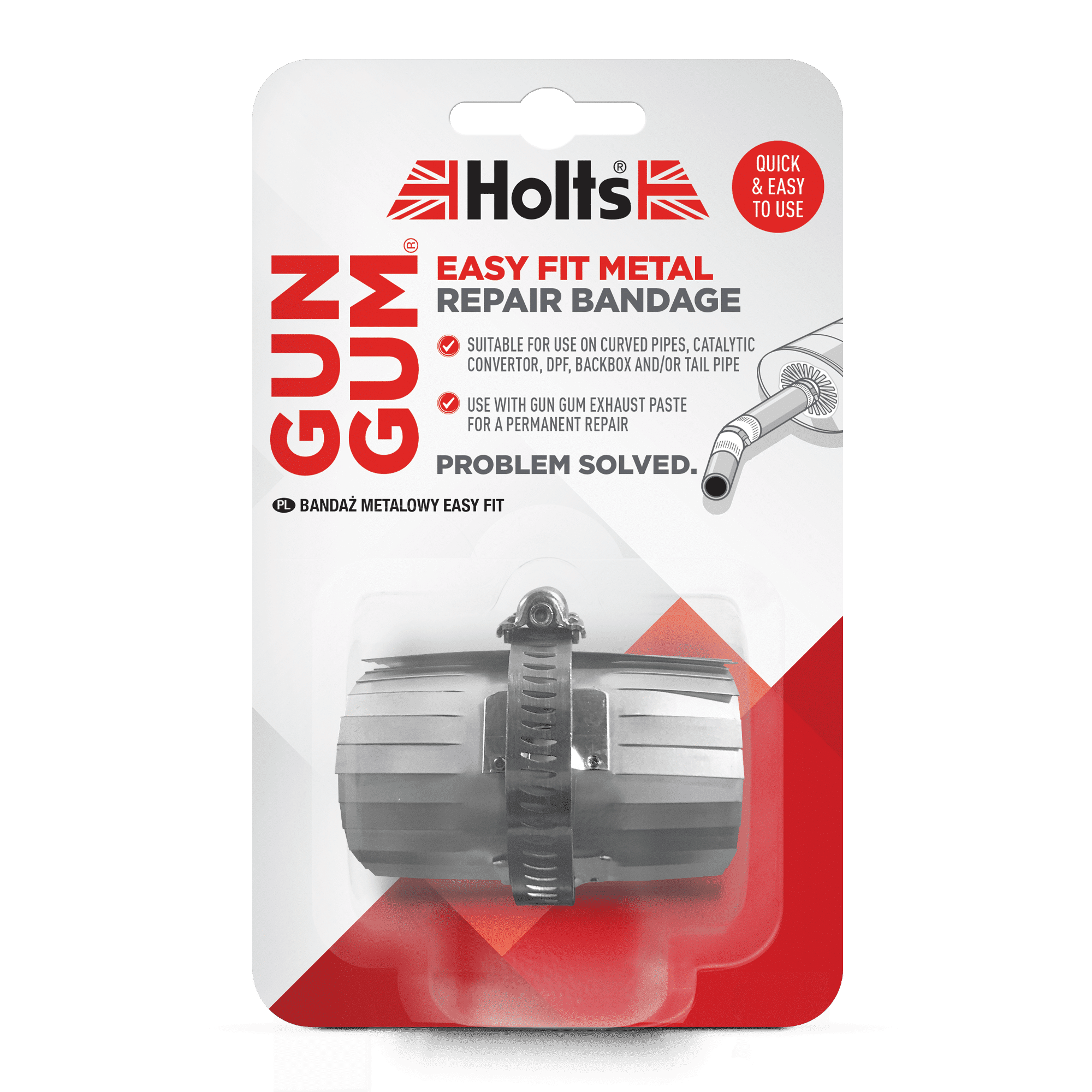A lot of people believe that it’s impossible to fix your own car at home, thanks to all the new electrical components and systems fitted in vehicles today. But actually, there are still bits of your car which can be fixed by hand – including your exhaust pipe.
If you want to save some money on costly repairs, like a cracked exhaust, or you’re simply the kind of person who likes to have a go at something yourself, then you’re in the right place. Holts’ philosophy has always been about helping drivers to fix their own cars and keep them on the road.
In this guide, we’ll show you how to fix small holes and cracks in your exhaust, saving you the expense of having a new one fitted. Our DIY exhaust repair method is something both car owners and professionals can use, as it provides a permanent, gas-tight seal for the exhaust system.
Quick Links
- How to Fix Holes in an Exhaust
- How to Tell if Your Exhaust has a Hole
- Why You Need to Fix Holes in an Exhaust
How to Fix Holes in an Exhaust
If your exhaust has a small hole or crack, you might think that you need to replace the whole thing. But before you rush to a garage, we have an easier and cheaper option.
The Holts Gun Gum range is designed to provide a permanent repair for small holes and cracks along the exhaust system. Using our range of bandages and accessories, as well as our Gun Gum Paste, you can fix holes and cracks on different parts of the exhaust system – from the tailpipe to the catalytic converter.
Using the mix of Gun Gum Paste and the right accessory, you can fix holes and cracks in your exhaust at home yourself – the bandages have been designed to fit the various different parts of the exhaust system, and the paste holds it in place for a permanent gas tight seal. You can select the right accessory here.
Here’s how it works:
Step 1 – Wait for your car to cool down and then locate the hole or damage, and clear any debris from the area.
Step 2 – Fit the bandage – you can follow the instructions on pack or on the video to see how it fits.
Step 3 – Wearing protective gloves, apply a thin layer of Gun Gum Paste to the damaged area, either with your finger or the spatula. Apply the bandage and tightly secure it in place.
Step 4 – The paste will dry overnight, or you can speed it up by running the engine.
Having your exhaust repaired professionally can be expensive but can also be time consuming. Fixing it at home yourself will save you time and money, and using Gun Gum will guarantee that it meets MOT standards.
Here, mechanic Jonathan Fry, from Jonathan Fry Automotive, fills you in on why you can trust Gun Gum to repair holes and cracks in your exhaust: “I carry Holts Gun Gum in stock and have used it for many years for small exhaust repairs. The secret is in the preparation!”
How to Tell if Your Exhaust has a Hole
Sometimes it can be hard to tell when an exhaust has developed a hole or crack. But more often than not, there’ll be some signs to show you that something’s not right.
Here are some of the common symptoms of a leaky exhaust pipe:
- Loud engine noise – part of an exhaust’s job is to muffle engine noise, directing exhaust fumes through a tailpipe that’s designed to reduce volume. When there’s a hole or crack in the exhaust, you might find that your car sounds a lot louder; this is the most common symptom of a leaky exhaust.
- Your car fails its emissions test – if your car fails the emissions part of the MOT test, there’s a chance a damaged exhaust pipe could be to blame. That’s because toxic fumes have been able to escape before they’re properly filtered, causing an increase in harmful emissions.
- Suffer headaches and dizziness while driving? A faulty exhaust could be causing it – if toxic fumes are escaping from the exhaust, there’s a good chance they’re making their way into the cabin. In small quantities, fumes like carbon monoxide can cause headaches and dizziness, and can be more dangerous if a serious leak goes unchecked.
These are just some of the symptoms of a faulty exhaust pipe. A visual check beneath the car should reveal the problem; look for rust spots and areas of damage, as this is most likely where the problem lies.
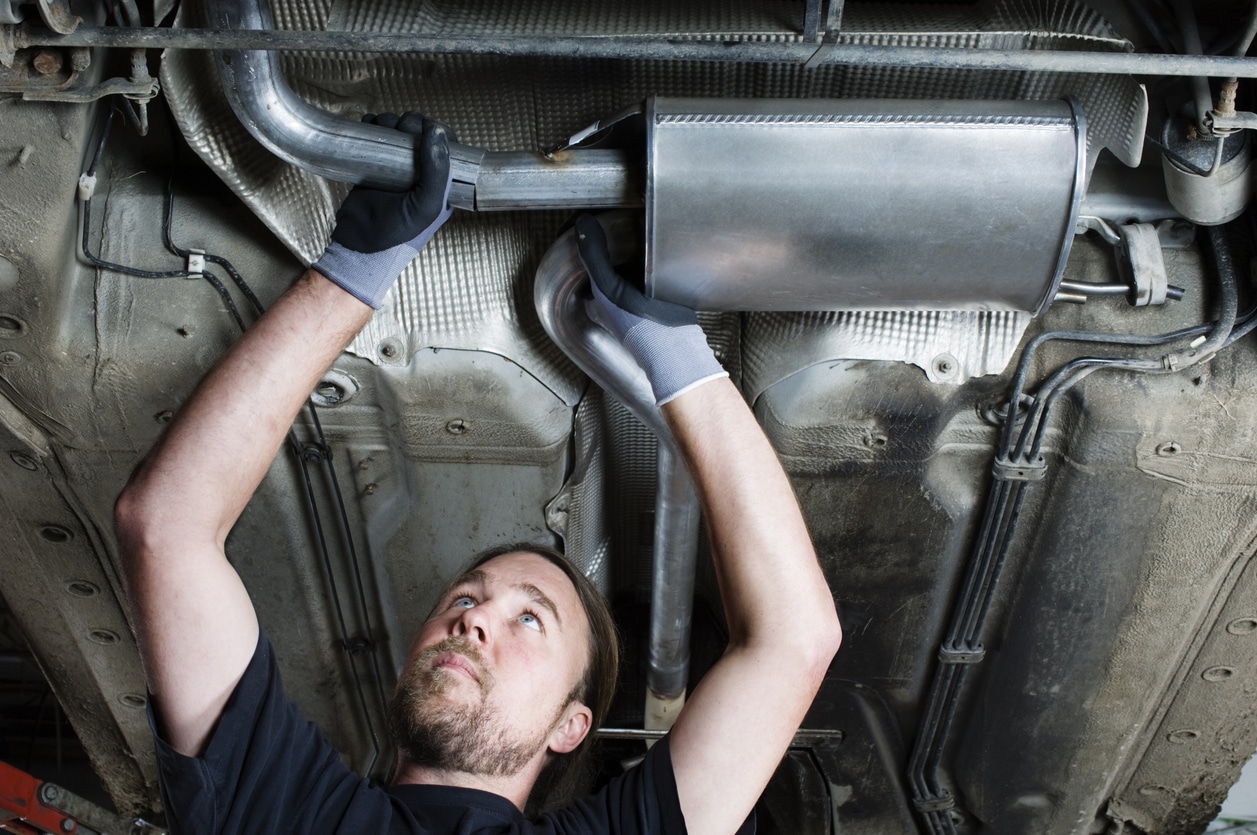
Why You Need to Fix Holes in an Exhaust
A small hole or crack in your exhaust might not sound that serious. But while it’s unlikely that you would break down as a result of a faulty exhaust, it’s important to get the problem fixed as soon as possible.
Driving with a hole or crack in your exhaust system is more dangerous than you might think. Not only is there the risk of increased emissions and pollution, but there’s also the danger of toxic fumes like carbon monoxide getting into the cabin.
Sound is also an issue you need to think about if you’re in two minds whether to get your exhaust fixed. If your exhaust is ‘blowing’, there’s a chance it might be louder than the legal noise limit allowed in built-up areas, meaning you could be fined by the police.
Another reason to fix your exhaust sooner rather than later comes down to cost. If you leave the problem unchecked, it’ll only get worse, to the point where you might need to replace the entire exhaust system.
We hope this guide helps you to fix your damaged exhaust system. For more information, visit the Holts Gun Gum product page. Or for more help fixing your car on your driveway, head over to the Holts blog.
